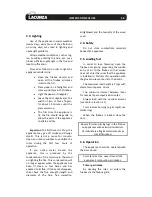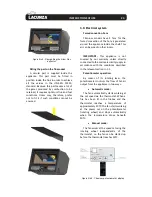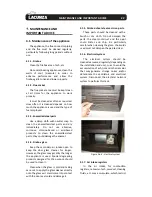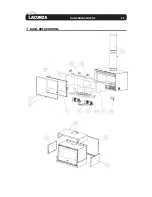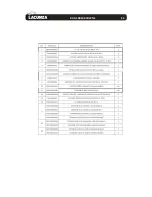
INSTRUCTIONS OF USE
16
3.
INSTRUCTIONS OF USE
The manufacturer accepts no liability
whatsoever for damage caused to parts as
a result of the improper use of non-
recommended fuels, modifications made
to the appliance or how it is installed.
Only use original replacement parts.
All local and national regulations,
including those referring to national and
European standards, must be observed
when using the appliance.
Heat is diffused by radiation and
convection via the front and exterior of the
appliance.
3.1.
Fuel
This appliance must not be used as an
incinerator. Do not use non-recommended
fuels.
•
Use dry logs (max. 16%
humidity), cut at least 2 years
ago, clean of resin and stored in
a sheltered, ventilated place.
•
Use hard woods with high
calorie values and good ember
production.
•
Large logs should be cut to
useable lengths before being
stored. The logs should have a
maximum diameter of 150mm.
•
Finely-chopped wood produces
greater heat output, but also
burns more quickly.
Optimum fuels:
•
Beech.
Other fuels:
•
Oak, chestnut, ash, maple,
birch, elm, etc.
•
Pine and eucalyptus logs are
low density and produce very
long flames, and may cause the
parts of the appliance to wear
out more quickly than normal.
•
Resinous wood may mean that
the appliance and the flue need
to be cleaned more often.
Non-permitted fuels:
•
All types of coal and liquid fuel.
•
“Green wood”. Green or damp
wood reduces the performance
of the appliance and leads to
soot and tar build-up on the
inner
walls
of
the
flue,
obstructing it.
•
“Recovered wood”. The burning
of treated woods (railway
sleepers,
telegraph
posts,
plywood, fibreboard, pallets,
etc.) quickly blocks the system
(soot and tar build-up), harms
the environment (pollution,
smells) and may lead to
deformation of the firebox due
to overheating.
•
All materials which are not
wood (plastic, spray cans, etc.).
Green and reprocessed wood may cause
chimney fires.
The graph below shows how the
humidity of firewood affects its heat
output:
Figure No.13 -
Relationship between firewood
humidity and heat output.
Summary of Contents for Titanium Plus
Page 1: ...Titanium Plus Instruction Book...
Page 26: ...BASIC BREAKDOWNS 25 6 BASIC BREAKDOWNS...
Page 27: ...BASIC BREAKDOWNS 26 6...
Page 28: ...BASIC BREAKDOWNS 27 6...
Page 29: ...DECLARATION OF PERFORMANCE 28 7 DECLARATION OF PERFORMANCE...
Page 30: ...DECLARATION OF PERFORMANCE 29 7...
Page 31: ...CE MARK 30 8 CE MARK...

















